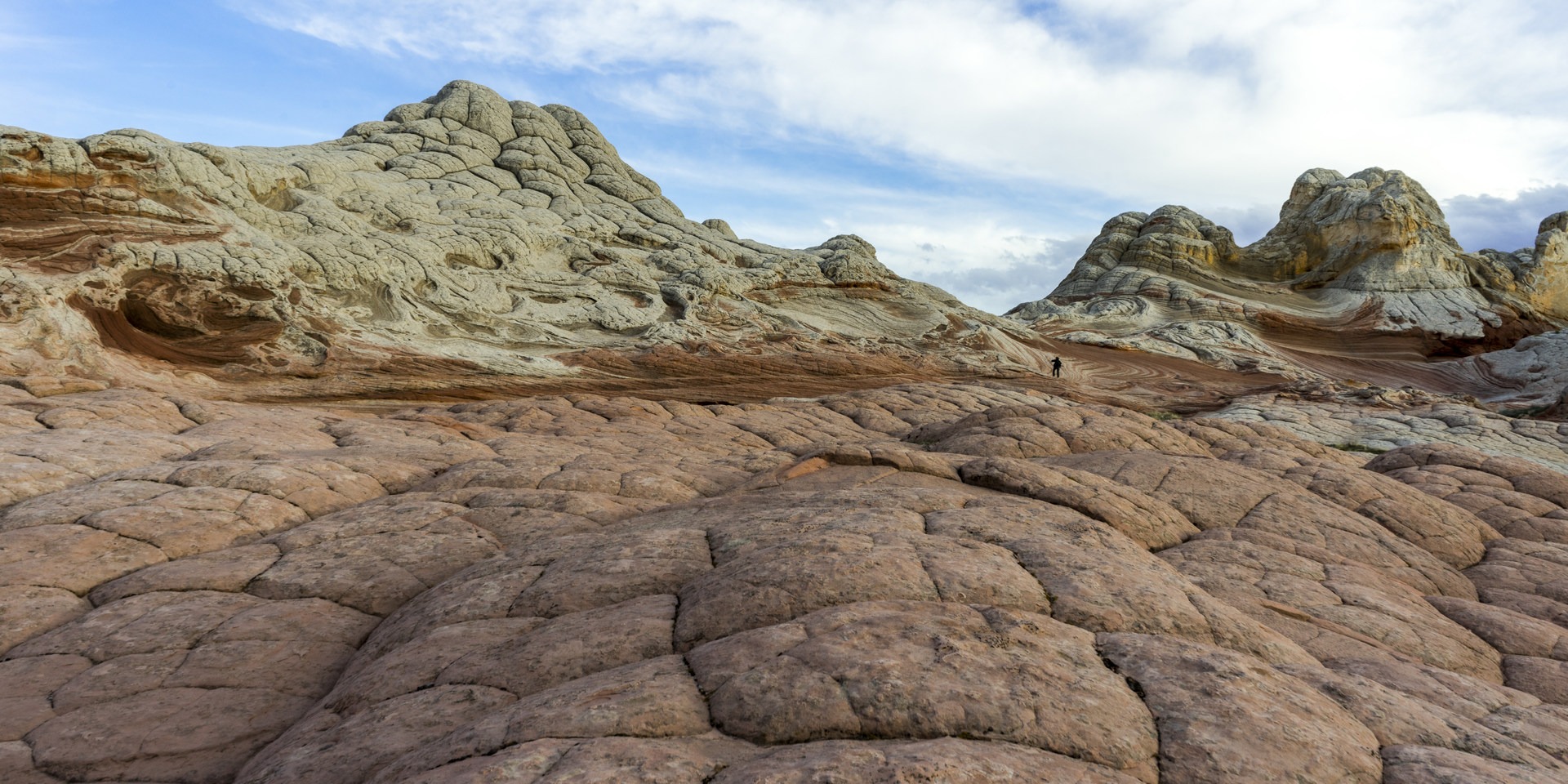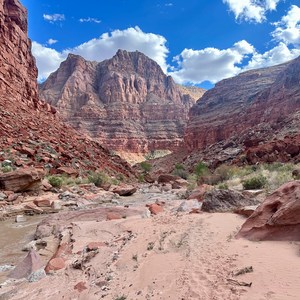You are here
In the year 2000, President Clinton created the Vermillion Cliffs National Monument, protecting nearly 300,000 acres from exploitation and development. This area of northern Arizona is a wild and rugged land, for the most part only accessible on very poor roads. The monument protects some unique and beautiful areas, and one of the most spectacular is White Pocket.
White Pocket is similar in some respects to The Wave formation in the nearby Coyote Buttes. There are wild and twisted layers of rock in varied colors. Both are magnets for photographers who find an infinite variety of compositions and spectacular light. White Pocket is considerably larger than The Wave, visitation is not limited by lottery at this point, and camping is permitted at the site. The long, rough access road discourages many visitors (and rightly so). It is a several-hour drive on sandy, rutted roads to reach the site. Some choose to go with a commercial guide, leaving the logistics to them and having the most time possible to explore the formations.
However one travels to White Pocket, once you're there, the fun begins. Forming a rough ellipse about a half mile long and quarter mile wide, this island of stone sits like a pile of colored frosting in the middle of the desert. There are hills to climb and tiny canyons to explore. If it has rained recently, there are many pools to create reflected images. It is a bit easy to get turned around and disoriented, but it is nearly impossible to get lost because the borders of the formation are so distinct. Sunrise and sunset are spectacular times to see the changing light on the rock formations. At night the dark sky can be great for milky way photography if the moon is right, or moonlit shots of the formations create a whole new dimension of expression. This is truly a playground for photographers of all abilities.
It is believed that these formations have their origin about 190 million years ago in the Jurassic period. Earthquake-induced deformation of soft sand created the folds before the sand hardened into rock. But there are alternative theories on how these rocks were formed, and no one really knows for sure how they were created.
Whether you'll be taking a guided trip or going it alone, there is much to be gained by spending the night at White Pocket. The early morning and evening light can be fantastic. Camping is allowed in and around the two large open parking areas, and there is typically plenty of room. Precautions should be taken in this extremely remote area--be prepared for changeable weather, bring plenty of water (none is available there) and food, tell someone where you are going and when you expect to return, and make sure all vehicles and tires are in good condition. There is no cell service at White Pocket or on any of the roads to get there.
Note: There are a few different access routes to White Pocket, and it is always a good idea to check with the BLM field office in Kanab--435.644.1200--for current road conditions to determine the safest route.
Logistics + Planning
Current Weather: Powered by Dark Sky

































Comments
Sign In and share them.